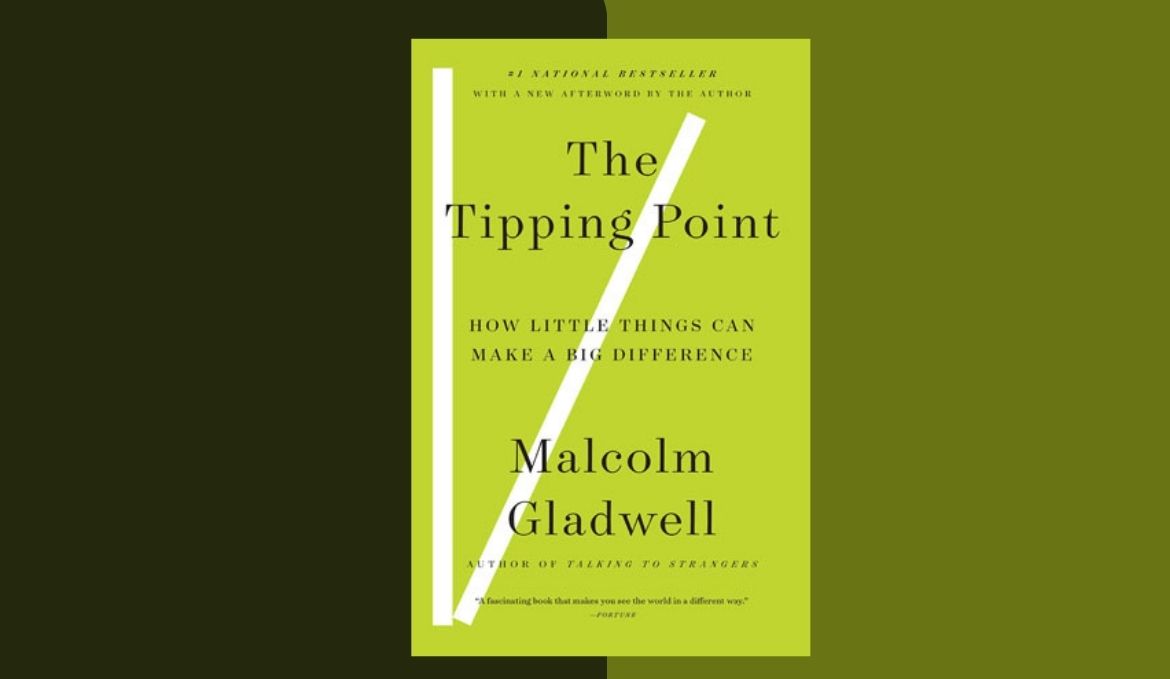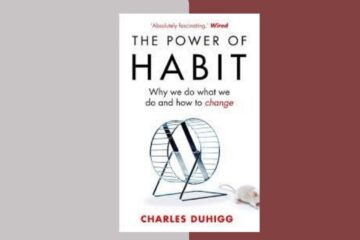The Tipping Point written by Malcolm Gladwell, is a fascinating book that explores the concept of social epidemics and how ideas can become contagious and spread rapidly. Gladwell’s book has become a must-read for anyone who wants to understand how social movements and trends take hold and how to create positive change in the world.
The book is filled with fascinating stories and real-world examples that illustrate the power of social epidemics and how they can be harnessed for positive change. Whether you’re interested in marketing, social movements, or personal relationships, understanding tipping points is key to creating change that sticks.
In this blog post, we will provide a summary of The Tipping Point and highlight the key takeaways from the book. We’ll explore the three key rules of epidemics: the Law of the Few, the Stickiness Factor, and the Power of Context. We’ll also provide practical tips and examples of successful implementation, so you can learn how to apply these insights to your own life and work. So, let’s dive in and discover the power of social epidemics together!
The Three Rules of Epidemics
The Tipping Point, composed by Malcolm Gladwell, is a book that digs into the idea of social scourges and how thoughts spread like quickly. Gladwell lays out three fundamental rules that govern social epidemics in the first chapter, titled “The Three Rules of Epidemics: the Law of the Meager few, the Tenacity Variable, and the Force of Setting.
According to the theory known as the Law of the Few, a small number of powerful people are the driving force behind social epidemics. Connectors, Mavens, and Salesmen are the names given to these individuals. People who are connectors have a large social network, know a lot of people, and are good at making connections. Mavens are people who love to educate others and are obsessed with learning new things. Salespeople are charismatic individuals who are adept at persuasion.
As per Gladwell, social plagues start with these key people. They are the ones who get the word out and convince others to join. You can quickly spread your ideas or products by targeting these influential people and creating a domino effect.
The Tenacity Element is the second rule of social scourges. It’s about an idea’s ability to stay in people’s minds and change their behavior. According to Gladwell, ideas are more likely to spread if they are simple to remember and comprehend. He cites the children’s television show Sesame Street as an example of how music and repetition made learning fun and memorable.
You can produce ideas and products that are more likely to be remembered and shared if you understand the Stickiness Factor. This can prompt expanded verbal exchange advertising and the fast spread of your message.
The Force of Setting is the third and last rule of social pandemics. It is based on the idea that a person’s environment and context have a significant impact on their behavior. Gladwell uses the “Broken Windows Theory” as an illustration, arguing that minor signs of disorder, such as broken windows, can result in an increase in crime in a specific location.
You can create environments and situations that encourage positive behavior and discourage negative behavior by comprehending the Power of Context. Positive social epidemics may spread more quickly than negative ones as a result of this.
The Law of The Few: Connectors, Mavens, and Salesmen
The title of the second chapter of Malcolm Gladwell’s The Tipping Point is “The Law of the Few: Mavens, salespeople, and connectors.” Gladwell examines in this chapter the concept that a small group of influential people, whom he refers to as Connectors, Mavens, and Salesmen, frequently initiate and sustain social epidemics.
People who are connectors have a diverse and extensive social network. They are people who are good at making introductions and know a lot of people. They aren’t always the most liked people, but they are good at bringing people from different groups together. Gladwell argues that Connectors are significant because they aid in the dissemination of ideas and information among various social circles.
Experts, then again, are people who have a profound information and enthusiasm for a specific subject. They are specialists who enjoy imparting their knowledge to others. Mavens don’t just want to learn everything they can about something; they likewise need to help other people pursue better choices. Gladwell argues that Mavens are significant because they offer helpful advice and information that can have an impact on other people.
Sales reps are charming people who are gifted at convincing others. They can persuade people to support ideas or purchase products. According to Gladwell, salespeople are important because they can popularize an idea or product by persuading others to adopt it.
As per Gladwell, social scourges are much of the time began and supported by a little gathering of Connectors, Experts, and Sales reps. You have the ability to set off a chain reaction that will swiftly spread your concepts or products if you focus on these important people. For instance, if you can persuade a Connector to try your product or donate to your cause, they might tell their various social networks, which in turn will tell their own social networks. This can set off a chain reaction that will eventually reach a tipping point, when your product or idea is widely adopted.
The Stickiness Factor: Sesame Street, Blue’s Clues, and the Educational Virus
Part three of Malcolm Gladwell’s book, The Tipping Point, is named “The Tenacity Component: Blue’s Clues, Sesame Street, and the Educational Virus” Gladwell delves into the concept of “stickiness,” or the capacity of an idea or product to remain in people’s minds and be remembered, in this chapter.
According to Gladwell, an idea or product must not only be appealing but also memorable for it to spread. He uses the children’s educational show Sesame Street as an example. It was made to teach young children basic skills like counting and reading. The creators of Sesame Street realized that they needed to create relatable and memorable characters like Big Bird and Elmo in order to engage children and keep them watching the show.
In a similar vein, Gladwell talks about how well-liked the children’s show Blue’s Clues was because it was made with stickiness in mind. The creators of the show put a lot of effort into creating a simple, repetitive format that would keep kids interested and make the lessons easy to remember. Blue’s Clues became one of the most successful children’s shows of its time thanks to its catchy songs, bright colors, and straightforward ideas.
In the context of the spread of disease, Gladwell also investigates the idea of the “stickiness factor.” He says that some diseases, like tuberculosis, are hard to spread because people have to be in close proximity to each other for a long time. Other diseases, like the flu, are more easily spread through casual contact, making them more contagious. A disease’s stickiness, or the ease with which it can spread from one person to another, is the most important factor in determining its spread.
The Tipping Point’s third chapter concludes by emphasizing the significance of stickiness in the development and persistence of social epidemics. By zeroing in on making your thought or item essential and simple to recall, you can expand its possibilities spreading and turning out to be generally taken on. Understanding the concept of stickiness can assist you in making a lasting impression on your audience, regardless of whether you are a marketer, educator, or health professional.
The Power of Context (Part One): Bernie Goetz and the Rise and Fall of New York City Crime
“The Power of Context (Part One):” is the title of the fourth chapter of Malcolm Gladwell’s book The Tipping Point. In “Bernard Goetz and the Rise and Fall of the Gangs in New York City” Gladwell delves into the concept that even insignificant shifts in an environment can have a significant impact on human behavior in this chapter.
Gladwell begins by recounting the story of Bernie Goetz, a man who shot and killed four young men on a subway train in New York City in the 1980s and became famous for it. Gladwell uses Goetz’s actions, which caused controversy, as a starting point to investigate the broader context of crime in New York City at the time.
According to Gladwell, New York City was experiencing a crime epidemic in the 1980s, with high rates of theft, murder, and other violent crimes. However, Gladwell suggests that the city’s environment played a role in the dramatic drop in crime rates that occurred in the 1990s.
One of the key changes was the execution of a “broken windows” strategy, which included getting serious about little violations like defacing and spray painting to communicate something specific that the issue wouldn’t go on without serious consequences. Gladwell argues that this policy had an impact on other parts of society as well, contributing to a sense of safety and order in the city.
Gladwell also talks about the idea of the “power of context,” which says that our actions are influenced by our surroundings. He cites a number of studies that support the idea that even minor changes in the environment can have a significant impact on our behavior.
In general, part four of The Tipping Point features the significance of the setting in significantly shaping the human way of behaving. We can have a positive impact on society by understanding the power of context and making small adjustments to our surroundings.
The Power of Context (Part Two): The Magic Number One Hundred and Fifty
Malcolm Gladwell delves into the idea that the number of relationships we can effectively maintain in The Tipping Point’s fifth chapter. This cutoff, he contends, is around 150 individuals and is known as the “enchantment number.”
Gladwell begins by discussing the findings of anthropologist Robin Dunbar’s research, which revealed that primates have a cognitive limit on the number of social relationships they are able to maintain. This limit appears to be around 150 for humans and is determined by the size of the neocortex in the brain.
This idea is then applied to human societies by Gladwell, who argues that groups of people work best when they are small enough that everyone knows each other personally. He gives a few examples, such as the North American religious group known as the Hutterites and the Gore-Tex company, which is well-known for its robust corporate culture.
Gladwell adds that this idea can be applied to other parts of society, like business and education. He discusses the significance of breaking down large businesses into smaller, more manageable units and the concept of “small schools,” which have been demonstrated to be more efficient than larger schools.
Overall, The Tipping Point’s fifth chapter emphasizes the significance of intimate relationships and small groups in society. We can establish communities that are both more productive and more connected if we comprehend the “magic number” of 150 and concentrate on cultivating enduring connections among smaller groups.
Case Study: Rumors, Sneakers, and the Power of Translation
The power of translation and how it can be used to spread ideas and information throughout society are the focus of The Tipping Point’s sixth chapter. To illustrate this point, Malcolm Gladwell uses a number of case studies, such as the rise of the sneaker brand Airwalk, the international success of the television show Sesame Street, and the spread of the urban legend about a man missing a kidney in a bathtub full of ice.
According to Gladwell, an idea or product must be adapted and translated to fit the culture and setting in which it is being introduced before it can “tip.” He uses Airwalk as an illustration, which initially struggled to gain traction within the skateboarding community before it was adopted and promoted by a select group of influential skaters. This gathering successfully made an interpretation of the brand to fit the skating society and assisted it with building up forward movement among a more extensive crowd.
Also, Gladwell investigates how Sesame Road was adjusted for various societies and dialects, consolidating neighborhood components and social references to make the show more appealing and connecting with for crowds in various regions of the planet.
In addition, Gladwell delves into the psychology of rumors and urban legends and the ways in which they can be translated into social networks and propagated. He utilizes the case of the kidney burglary legend, which spread quickly through informal and was adjusted to fit various settings and settings.
In general, the significance of translation and adaptation in the dissemination of ideas and information is emphasized in Chapter 6. By understanding the social and context-oriented factors that impact how individuals get and decipher messages, we can all the more really impart and make a change in the public arena.
Case Study: Suicide, Smoking , and the Search for the Unstick a Cigarette
The idea of “stickiness” and how it relates to behavior change are discussed in depth in The Tipping Point’s seventh chapter. Malcolm Gladwell shows how certain messages can be made more “sticky” in order to have a greater impact on behavior by using the examples of smoking cessation and suicide prevention.
Gladwell presents the possibility of “the study of disease transmission of thoughts,” which recommends that thoughts can spread similarly as sicknesses. He contends that to make conduct transform, we should distinguish the “vector” that is liable for spreading the unsafe way of behaving or thought, and target it with a message that is both noteworthy and sincerely thunderous.
After that, Gladwell looks at suicide prevention and how, in the 1960s, a group of researchers were able to drastically reduce the number of suicides in the United Kingdom by changing how suicide was reported in the media. These researchers were able to alter the public’s perception of suicide and reduce the number of suicides in the country by creating a sticky message that emphasized the tragedy of suicide and urged people to seek assistance.
Gladwell likewise investigates the idea of “unsticking” a way of behaving, utilizing the case of smoking discontinuance. He argues that in order to convince people to stop smoking, we need to come up with a message that not only sticks in their minds but also affects them emotionally, like the graphic images used in anti-smoking campaigns.
In general, chapter seven emphasizes the significance of creating messages that stick and can alter behavior. We can more effectively create messages that resonate with people and encourage them to make positive changes in their lives by comprehending the psychology of how ideas and behaviors spread.
Conclusion: Focus, Test, and Believe
Malcolm Gladwell stresses the significance of focus, testing, and belief in achieving a successful tipping point at the book’s conclusion. He contends that in order to bring about a social epidemic, we need to concentrate on a particular message, put it through rigorous testing, and have faith in its capacity to effect change.
According to Gladwell, successful tipping points are always built around a specific idea or message, emphasizing the importance of focus. He contends that in order to bring about a tipping point, we must first identify a message that is both compelling and easy to spread and comprehend by a large audience.
Gladwell then talks about how important testing is and says that careful experimentation and analysis often lead to successful tipping points. He argues that in order to determine the most effective message or strategy, we must be willing to test various approaches and evaluate their efficacy.
In conclusion, Gladwell stresses the significance of belief, stating that individuals or groups with a strong belief in the power of their message frequently produce successful tipping points. He argues that in order to spread a social epidemic, we need to believe in our capacity to effect change, be willing to take chances, and persevere through difficulties.
In general, The Tipping Point’s conclusion offers a useful framework for successfully establishing social epidemics. We can bring about social change that lasts for a long time by focusing on a particular message, putting it through rigorous testing, and having faith in its ability to change society.



